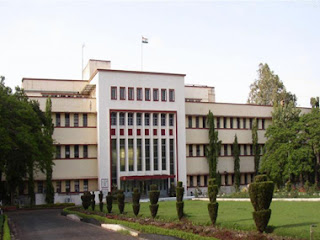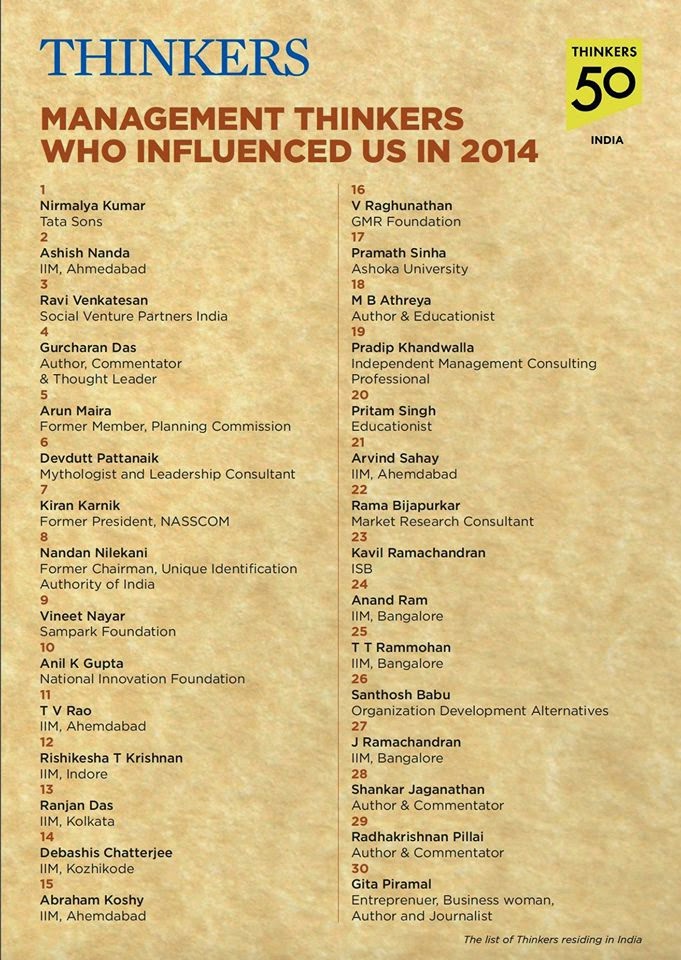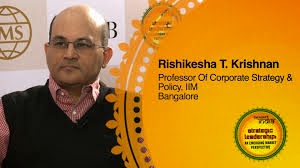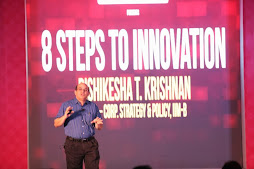India’s National Chemical Laboratory (NCL) is an iconic institution. NCL was set up in 1950 as a part of the first wave of new national laboratories under the aegis of the Council of Scientific & Industrial Research (CSIR). Along with Mumbai University’s Institute of Chemical Technology and the CSIR’s own Indian Institute of Chemical Technology in Hyderabad, it is one of the unique research institutions that straddles the spectrum of basic research to applied research to application to industrial problems through product and process development.
Reflecting this, since its inception, scientists at NCL have published more than 10,000 research papers including about 20 in discovery-based journals like Nature and Science and it has been at the forefront of patenting with 100s of US and Indian patents (CSIR is the largest foreign patent holder in India; NCL is one of the prominent contributors to the CSIR tally).
I first visited NCL sometime in 1994-95 when I was working on my doctoral thesis. At that time, under the leadership of Dr. Mashelkar, NCL was undergoing a major shift to cope with the new economic paradigm of economic deregulation. By the time I visited NCL again, it was almost ten years later, and NCL had established itself successfully as a contract research organization working on specific problems for leading multinationals and select Indian companies (more about this later in this post). My most recent visit was in 2010 when I delivered the 8th NCL Innovations Seminar Series lecture on “From Jugaad to Systematic Innovation: The Challenge for India.” Not surprisingly, some of the most insightful discussions I had on the theme of my book were during my talk at NCL.
A recent book
Excellence in an Overlapping Culture: The Big History of India’s National Chemical Laboratory (New Delhi: CSIR & Routledge, 2011) by Professor L.K. Doraiswamy (LKD), NCL’s fifth director, gave me the opportunity to reflect on NCL’s significant achievements. But it also provoked fresh thinking on the future role of national laboratories in India.
NCL: The Early Years
Though the seeds for the CSIR were sown during British rule, the CSIR got a fillip thanks to the vision of Jawaharlal Nehru. Having studied in Cambridge during the early part of the 20th century, he had seen at close quarters the excitement surrounding modern science as well as its potential for human development. Upon India’s independence, Nehru was determined that India should not miss out on being part of the scientific revolution. He was personally involved in the founding of several of the CSIR laboratories and was present at several laboratory inaugurations.
Though the CSIR in general, and NCL in particular, were set up with an eye to using science for industrial application, it took some time for this happen. NCL’s focus in its early years was on creating the basic laboratory infrastructure and a culture and working system that supported high quality research. The laboratory’s first two directors were brought in from outside India to make this happen. The process was completed by the laboratory’s first Indian director, Professor K. Venkataraman, an expert of international stature on dye chemistry. (It should also be remembered that the Indian chemical industry was in its infancy at that time, and it took some years for the evolution of industrial collaborators with whom NCL could work.)
Working with Industry
While some first steps for the development of chemical processes for industry such as the creation of a chemical engineering group, setting up a pilot plant, and encouragement of interaction between chemists and chemical engineers had been put in place earlier, the thrust towards industrial applications had to wait till NCL’s fourth director, B D Tilak, adopted this as the focus of his tenure in the mid-1960s. Professor Tilak bid aggressively for external projects, tied up with project consultancy and engineering firms, lobbied with the government, and even gave performance guarantees so that NCL could play a substantive role in the development of the Indian chemical industry. In retrospect, it is clear that this entrepreneurial push was required to overcome the skepticism that industry had regarding NCL’s capability to create processes that would work on an industrial scale. Remember that companies often had the option of buying complete technology packages from established foreign contractors who could demonstrate working plants elsewhere in the world as well as provide performance guarantees. While many of these industry projects did not involve novel chemistry, they provided scientists and engineers at NCL a learning ground for the problems of industry, and helped the laboratory overcome the criticism of being too focused on research of a more academic nature.

It was in the 1980s that the first major industrial processes involving novel Chemistry from NCL were commercialized. Under the scientific leadership of Paul Ratnasamy, NCL developed zeolite-based catalysts that were used in xylene isomerisation processes at IPCL, then a government-owned petrochemical company. The zeolite research programme included deep basic research on the properties of the catalyst, characterization, reaction engineering, and process simulation. Strong support from the IPCL top management (the then CMD, Dr. S. Ganguly allowed the NCL catalyst to be used in the actual plant for a whole month to show that it worked), existing relationships between NCL and the company (the director of NCL was on the board of IPCL right since its inception + there were strong working relationships across the two organizations), and an industry partner who could supply the catalyst in sufficient scale and quality (ACC’s catalyst unit was later acquired by IPCL) were important factors that led to the commercial success of the encilite project.
By the late 1980s, it became clear that the environment for industrial research and collaboration in India was changing. Protection of the Indian economy was beginning to reduce, more chemicals and intermediates could be imported under Open General Licence, and price fluctuations for inputs could make processes unviable. The era of reverse engineering known processes was over. Projects like the encilite development could have a future, but any technology would need continuous improvement and enhancements to survive international competition. The level of competition faced by chemical companies was going up, economic scales of production were becoming an imperative, and companies no longer had the luxury of being able to co-develop new processes over indefinite timeframes.
Internationalization of NCL
The deregulation of the Indian economy in the early 1990s accelerated this trend. But other dimensions of the deregulation process – a greater external orientation and focus on international markets – provided new opportunities as well. Around this time, many multinational companies started embracing the now well known paradigm of
open innovation and therefore sought partners for their R&D work. This was accompanied by a high degree of disaggregation of the entire R&D value chain with increasing division of labour across different entities, often across borders.
Under the leadership of Dr. Mashelkar who had become director of NCL in 1989, NCL re-positioned itself to take advantage of these opportunities. NCL became an important player in contract research, working with some of the top multinationals in the world. This allowed the laboratory to use its strong intellectual expertise to work on problems of industrial significance. But as LKD points out, this also meant that NCL was no longer undertaking end-to-end technology development. As with all contract research, the results of the research belonged to the sponsors of the research. While NCL has tangible revenues to show for this work, it’s difficult to trace the final impact of NCL’s work. In fact, even the table in LKD’s book listing NCL’s MNC partners and their projects gives sketchy titles of the projects citing confidentiality clauses in NCL’s contracts with these clients!
According to LKD, Dr. Mashelkar’s successors Paul Ratnasamy and S. Sivaram successfully advanced NCL’s integration with global companies. Sivaram charted a new direction as well by setting up an Innovation Park and Venture Centre on the NCL campus in an effort to support entrepreneurship and the incubation of companies.
The Future of National Laboratories

NCL provides an excellent example of how a national laboratory can keep pace with changing times. It started by creating a base for excellence in Chemistry research, and enhanced the scope of its research to include chemical engineering. As India grew its chemical industry in the 1960s, to make itself more relevant to industry, it developed processes to manufacture different chemicals, and worked with engineering consulting firms to scale up the processes and transfer them to companies. While this was initially done with “known processes,” the laboratory later graduated to “improved processes” that reduced the number of steps or used materials more efficiently. Still later, as the demand for reverse engineered processes came down and industry developed its own capability in process development, the laboratory came up with novel processes of its own, accompanying process development with deep research into the underlying chemistry and chemical engineering. In a globalised environment, NCL made another shift to doing contract research in areas in which it had deep competence.
What’s next? NCL’s challenges mirror those of CSIR itself. Creating a strong basic research infrastructure and training generations of PhD students as many CSIR labs like NCL do makes a lot of sense when the university system is weak.. CSIR’s recent move to get itself the status of a university may be seen in this context. However, as Toren and Galai pointed out in a paper in
Research Policy many years ago, the role of national laboratories becomes more hazy as the competence of the university system grows. (For a wonderful account of what a good university laboratory can to do spawn industrial innovation, read the
account of Robert Langer’s lab at MIT in a recent issue of the
New York Times).
Developing industrial processes as part of an integrated research programme as Paul Ratnasamy and his team did with zeolite catalysts is a good way of driving industry-oriented research. But, historically, most national laboratories in India (including mission-oriented ones like CDOT and CDAC) have struggled to retain the motivation to keep upgrading industrial technologies they have created. Once the research content goes down, the scientists’ motivation to continue working on the technologies tends to reduce. But from the user’s point of view, continuous enhancement of the technology is important particularly to keep ahead of competition.
National laboratories were set up in India to enhance domestic technological capabilities. While that does not preclude working with MNCs, it does raise the question of whether a predominantly MNC focus makes sense. The laboratory and the individual scientists benefit, but there could be legitimate questions about the benefits to the larger economy.
In fact, the question of how the national laboratories benefit the economy has been a thorny one for decades. While Nehru was philosophically convinced that the existence of national laboratories would benefit the local economy and did not seek tangible evidence for such benefits, his successors and the broader political establishment were not satisfied that easily. Ever since the Sarkar committee was set up about 40 years ago, there has been increasing emphasis on the national laboratories making tangible contributions to the nation.
These pressures have resulted in CSIR and the individual laboratories seeking visible means of justifying their existence. LKD writes about how in his last few years as director Tilak focused much of his energies on using science for rural development. One can detect a trace of irritation as LKD writes about this, as this seemed to deviate from the focus on research and excellence that NCL was known for, and instead emphasised diffusion of existing knowledge. LKD underlines how, as Tilak’s successor, he quickly reoriented the laboratory back to its original mission for excellence.
But the pressures to be relevant haven’t gone away. Whether it be Mashelkar’s backing for grassroot innovations or the present CSIR DG’s backing of the soleckshaw (a solar-powered rickshaw), each Director General or lab director has felt compelled to show direct evidence of contributions to inclusive growth. Of course, today this is in keeping with the inclusive innovation paradigm adopted by the government through the National Innovation Council.
Yet, combining high science with “appropriate innovation” is far from easy. Too much emphasis on the latter seems to make it difficult to maintain the culture of scientific excellence that laboratories like NCL are famous for.
Perhaps the biggest challenge facing the national laboratories today is attracting and retaining talent. The country’s top talent today has myriad more opportunities than what the doyens of NCL like LKD, Mashelkar or Ratnasamy had in their time. Science and R&D are not preferred careers. Even for those who seek a career in R&D, India has a large MNC R&D sector which offers job prospects, salaries and infrastructure that are much more attractive than what the public sector has to offer.
Given this backdrop, has the time come to discuss afresh what should be the objectives, scope and structure of national laboratories in India?
Endpiece
LKD’s account of the history of NCL is essential reading for anyone who wants to understand the changing context of innovation in India. Sadly, LKD himself passed away earlier this year, but his book remains a comprehensive record of the challenges faced by an R&D organization in India, and how a successful laboratory addressed these challenges.





























